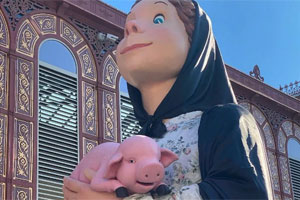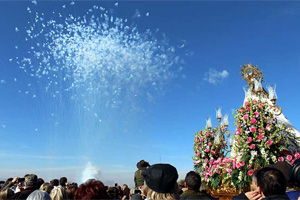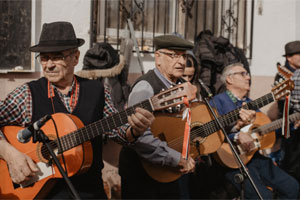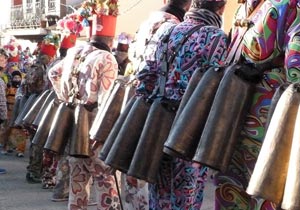Entrance of bulls and horses of Segorbe
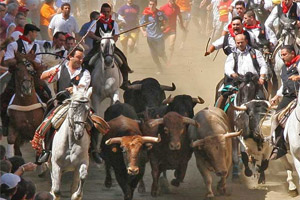
The second week of September every year, six bulls and thirteen horses start a route in the Calle Colón, to celebrate the Entrance of bulls and horses of Segorbe, a Festival of International Tourist Interest and Intangible Cultural Interest that takes place from Monday to Sunday.
What does the festival consist of?
This exciting fiesta is made up of five parts.
Bullfighting
It all starts when the shepherds open the corral gates at around 11:00 a.m., so that the animals can graze and drink. Then the selection of the bulls that will run in the Entrada begins.
Climbing up the Rialé
At 13:00 h., the cattle are driven up the Rialé path, up to the wall, at the height of Plaza del Ángel, and then along Calle del Argén to Plaza de los Mesones.
The Meeting
At 14:00 h. the Cathedral bells ring out and a rocket is launched to start the Entrada. The horsemen appear and gather with the bulls in the Plaza de los Mesones, enclosing them in a protective rhomboidal formation to prepare everything for the race.
The Race
This takes place at stampede speed along Calle Colón, a distance of about 500 metres, and is approximately one minute of adrenaline for all present, as the horsemen guide the bulls to the Plaza de la Cueva Santa, where they are enclosed in a fenced enclosure.
Caballista Parade
The Caballistas begin the return to the Plaza de los Mesones, following the same route, and are given a standing ovation by all present, as a reward for their act of bravery.
The origin of the Segorbe Bull and Horse Enters
It is a tradition that dates back to the year 1386, in which only the nobles took part, however, as time went by, farmers were included in the event.
The Entrance of bulls and horses of Segorbe is a recognition of the transhumance, a custom that eventually became the festival that is maintained today. It even has a monument, located in the Plaza Obispo Ahedo, a work by the sculptor Manuel Rodríguez Vázquez.
What other things to see or do in Segorbe if you go to the fiesta?
This beautiful town has many places to visit, starting with a stroll through the old town and appreciate the monuments of medieval origin.
Another essential site is the ruins of the 14th century Hermitage of Santa Bárbara, the Castle of Segorbe or Castillo de la Estrella, at the top of the Cerro de Sopeña, after a tree-lined walk. Afterwards, visit the medieval walls, built at the base of the castle, to culminate with Segorbe Cathedral, whose construction was attached to the wall.
You can also visit the Centro de Interpretación de La Entrada de Toros y Caballos, located in Plaza Alto Palancia, a place where you can experience the spectacle of the Entrada de Toros y Caballos de Segorbe, with the help of a large-format circular multi-projector.
Gastronomy in Segorbe, what to eat
Segorbe has a rich and varied gastronomy, inherited from medieval times. Some of its most renowned products are the olive oil, whose raw material is native to the region and has received many awards.
The region's market garden offers top quality vegetables and fruit, such as loquats, persimmons and cherry trees. The region's vineyards have enabled the production of exquisite wines. They also produce artisan hams and sausages, made according to recipes that have been passed down from generation to generation.
The most recommended dishes are Olla Segorbina, baked rice and arroz empedrao. But, if you are looking for sweets to try in Segorbe, try the traditional apple cake, angel hair and sweet potato cakes, torta de colorao, and Jerican pastries.

